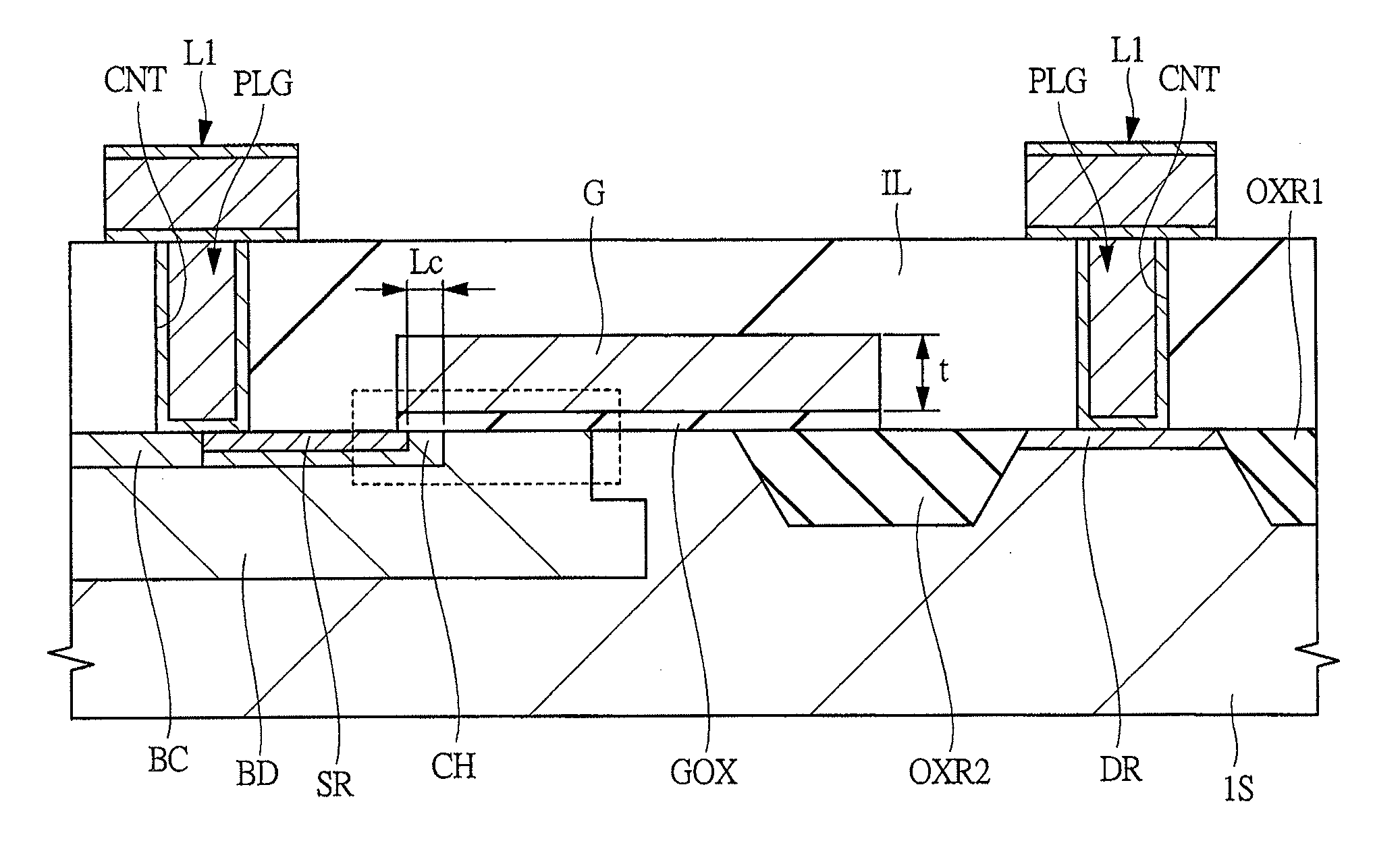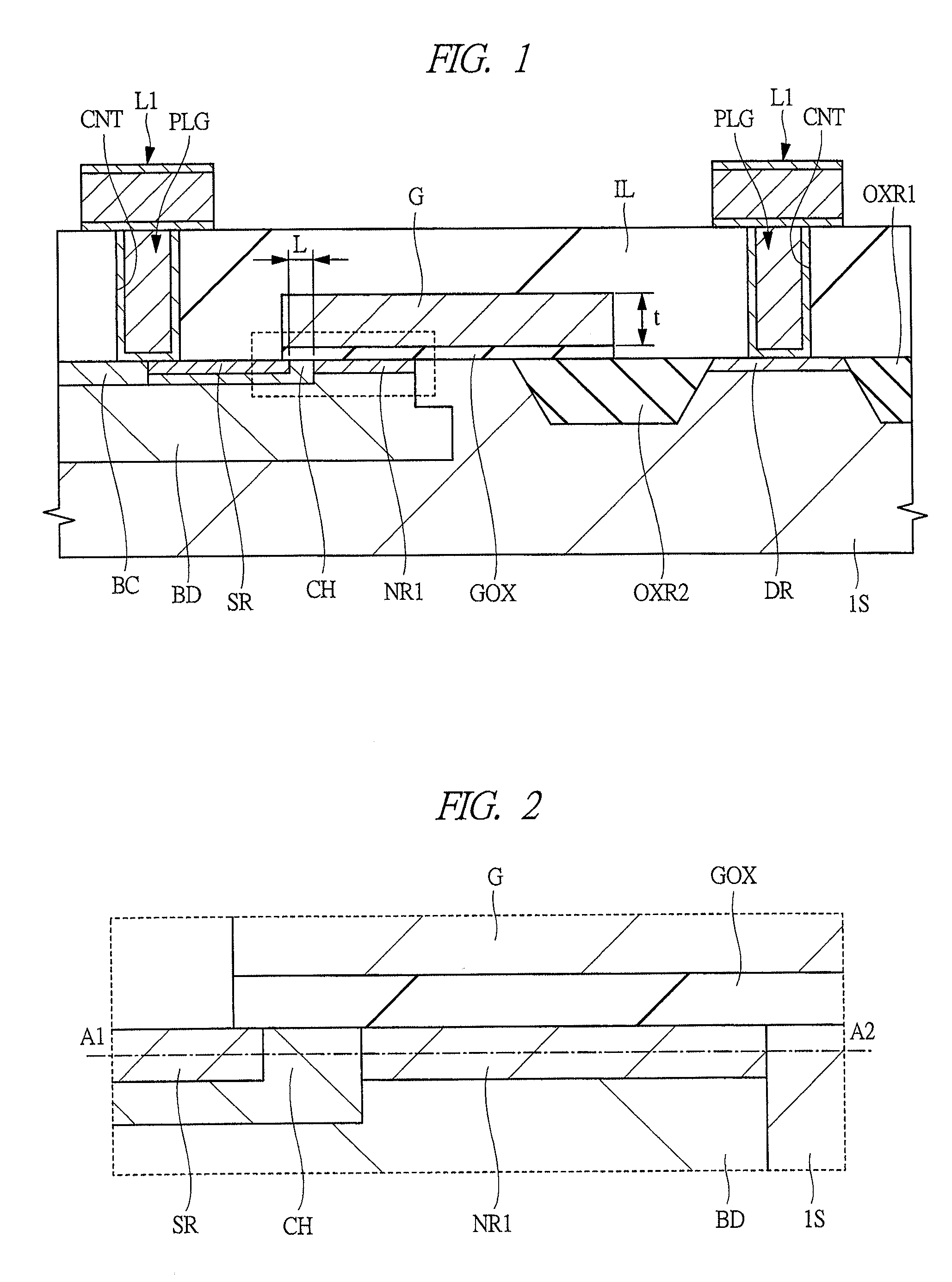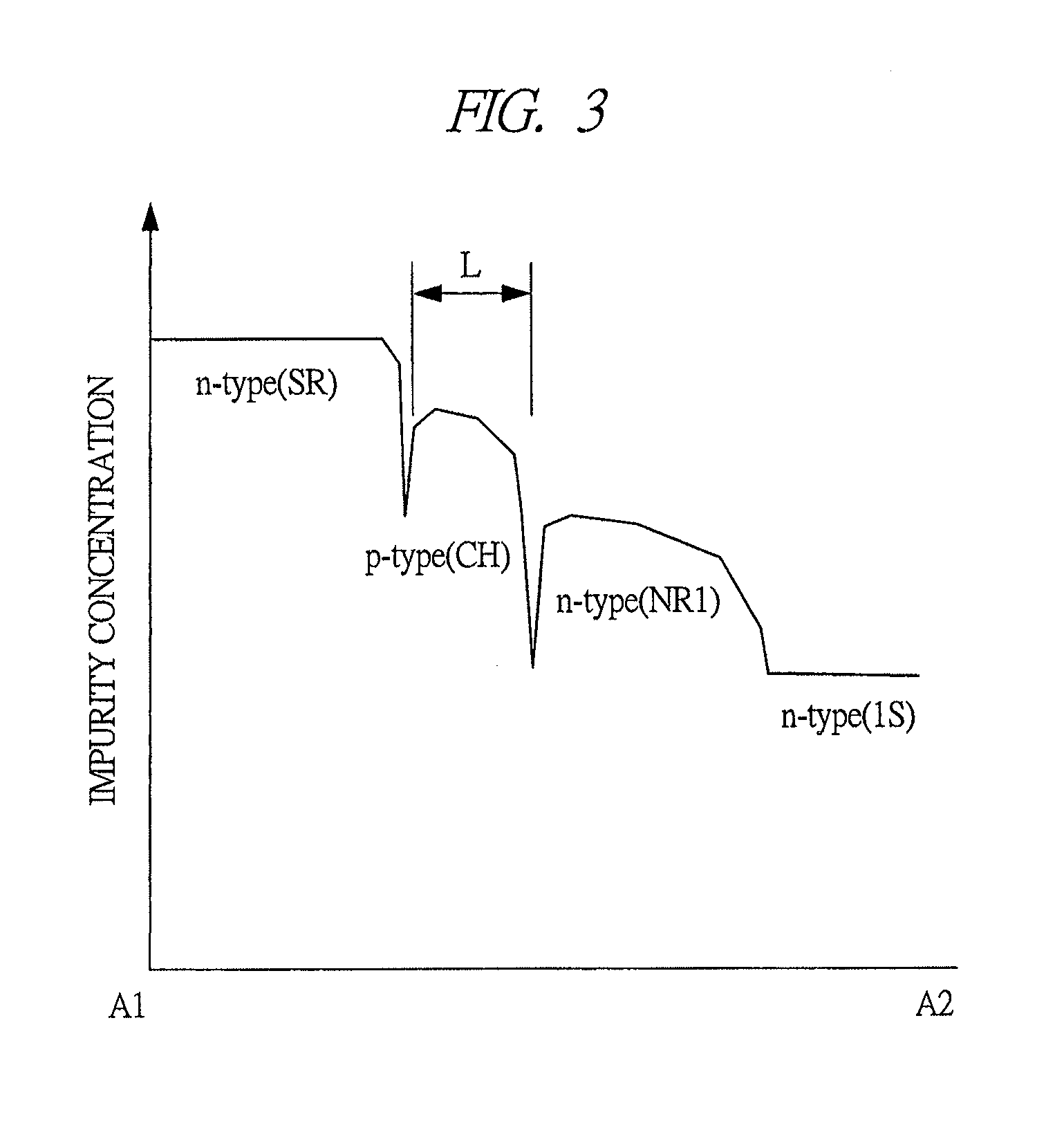Semiconductor Device
a technology of semiconductor devices and semiconductors, applied in the direction of semiconductor devices, basic electric elements, electrical equipment, etc., can solve the problems of difficult to realize circuit operation conforming design specifications, difficult to use gate electrodes as masks, and difficult to use this step in the manufacturing of integrated circuits, etc., to achieve the effect of improving the density of output curren
- Summary
- Abstract
- Description
- Claims
- Application Information
AI Technical Summary
Benefits of technology
Problems solved by technology
Method used
Image
Examples
first embodiment
Device Structure of Medium / High-Voltage MOSFET
[0048]A device structure of a medium / high-voltage MOSFET in a present first embodiment will be described with reference to the drawings. First, in the present specification, for example, a MOSFET having a breakdown voltage between a source region and a drain region of 20 V to 200 V-class is assumed as an example of the medium / high-voltage MOSFET to give explanation. However, the present invention is not limited thereto, and the device structure in the present first embodiment can be applied to various MOSFETs.
[0049]FIG. 1 is a cross-sectional view showing a device structure of the medium / high-voltage MOSFET in the present first embodiment. As shown in FIG. 1, first, the medium / high-voltage MOSFET in the present first embodiment is formed on a semiconductor substrate 1S to which an n-type impurity such as phosphorous (P) or arsenic (As) is introduced. Specifically, an oxide-film region OXR1 is formed in an element formation surface (surfa...
second embodiment
[0113]In the above-described first embodiment, the example in which the n-type semiconductor region NR1 having an impurity concentration higher than that of the semiconductor substrate 1S is provided in the region in which the channel region CH is not formed in the region immediately below the gate electrode G has been described. However, in the present second embodiment, an example in which the above-described n-type semiconductor region NR1 is not provided will be described. The device structure of a medium / high-voltage MOSFET in the present second embodiment is substantially similar to the device structure of the medium / high-voltage MOSFET in the above-described first embodiment; therefore, different points will be mainly described below.
Characteristics of the Present Second Embodiment
[0114]FIG. 13 is a cross-sectional view showing the device structure of the medium / high-voltage MOSFET in the present second embodiment. Also in the present second embodiment, as well as the above-d...
third embodiment
[0134]In the present third embodiment, application examples of the medium / high-voltage MOSFETs described in the above-described first embodiment and the second embodiment will be described. FIG. 24 is a drawing showing an example in which the medium / high-voltage MOSFET of the present invention is applied to an output-stage circuit of an integrated circuit in which a digital circuit and an analog circuit are consolidated. In FIG. 24, the output-stage circuit OC has a configuration in which a p-channel-type MOSFET QH and an n-channel-type MOSFET QL of the present invention are connected in series between a power source electric potential VH and a reference electric potential GND. In this case, the p-channel-type MOSFET QH is connected to the power source electric potential VH side, and the n-channel-type MOSFET QL is connected to the reference electric potential GND side. A connection node (connecting point) between the p-channel-type MOSFET QH and the n-channel-type MOSFET QL serves ...
PUM
 Login to View More
Login to View More Abstract
Description
Claims
Application Information
 Login to View More
Login to View More - R&D
- Intellectual Property
- Life Sciences
- Materials
- Tech Scout
- Unparalleled Data Quality
- Higher Quality Content
- 60% Fewer Hallucinations
Browse by: Latest US Patents, China's latest patents, Technical Efficacy Thesaurus, Application Domain, Technology Topic, Popular Technical Reports.
© 2025 PatSnap. All rights reserved.Legal|Privacy policy|Modern Slavery Act Transparency Statement|Sitemap|About US| Contact US: help@patsnap.com



